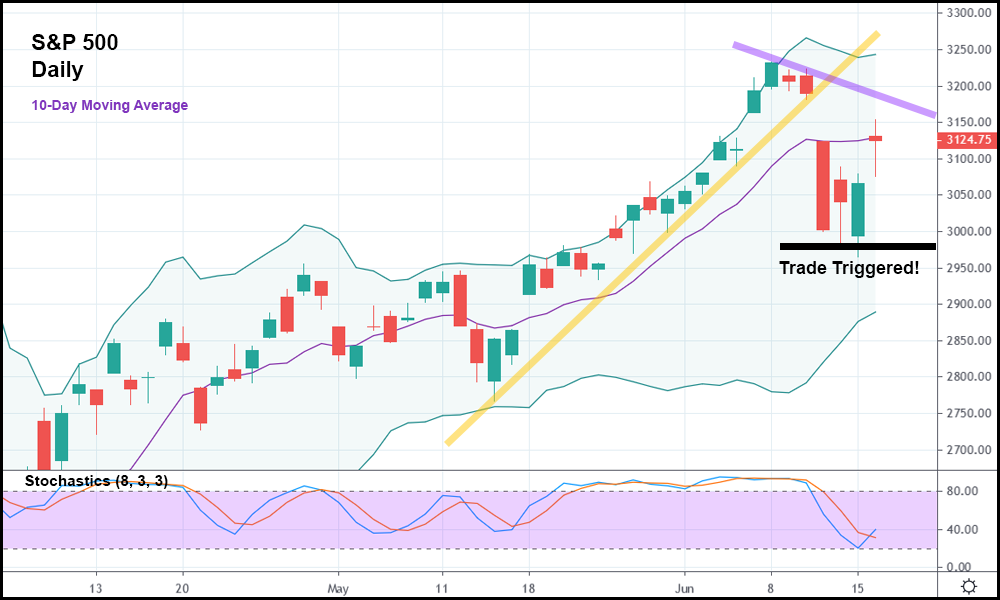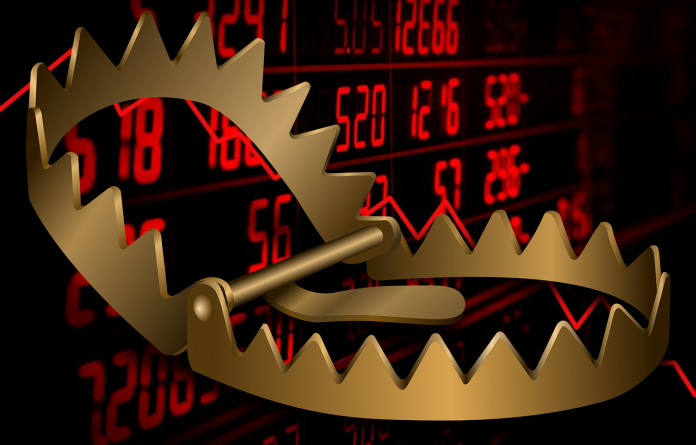Up, up, up.
That’s where investors seem to think the market’s headed after the U.S. government reported a record-setting surge in May retail sales.
Last month, retail sales increased 17.7% according to a report from the U.S. government this morning, far surpassing the 8% consensus estimate. Consumers are back, and so too are bulls.
The Dow, S&P, and Nasdaq Composite all soared on the news. Making matters even better were rumblings about a $1 trillion Trump infrastructure plan, set to be debuted sometime in the near future.
The icing on the cake, however, was a study that found dexamethasone – an easy-to-get steroid – reduced deaths in one-third of hospitalized coronavirus patients.
The hits just kept on coming.
Well, until Fed Chairman Jerome Powell revealed that the central bank would take a more cautious approach to buying individual corporate bonds, that is.
“If the market function continues to improve, then we are happy to slow or even stop the purchases. If it goes the other way, we will increase,” Powell said before Congress this morning.
“I don’t see us wanting to run through the bond market like an elephant snuffing out price signals, things like that.”
Stocks shed some of their gains immediately following Powell’s remarks. By the session’s end, the major indexes closed slightly lower than they opened, albeit still for net gains on the day.

For the S&P 500, that meant closing almost exactly on top of the 10-day moving average – a key technical indicator used to determine shifts in momentum.
In fact, last Thursday, the S&P 500 broke out below its bullish trend (represented by the yellow trendline) and the 10-day moving average. Per our typical trading rules, it became a short setup that triggered (went short) on Monday.
Today, the S&P 500 opened slightly above the 10-day moving average. Had it continued bursting higher, it may have even surpassed its minor bearish trend (represented by the trendline in purple).
If the S&P 500 does so in the coming days, it’ll be worthy of a long setup, likely above the high from last week.
And though investors were excited to buy this morning after hearing last month’s retail sales stats, the truth is that the market is still at risk of falling further. Despite today’s gains, the S&P 500 failed to close above the 10-day moving average.
That should have bulls worried moving forward. Now, stocks could absolutely punch higher tomorrow. In fact, I wouldn’t be surprised if they did.
But around this time next week, don’t be shocked to see the S&P 500 below the trade trigger in the chart above. The index still has to conquer both the 10-day moving average and its minor bearish trend to shift to the bulls.
Until it does, staying bearish is likely the wise move, even if it’s hard to see it that way after a large daily surge.








